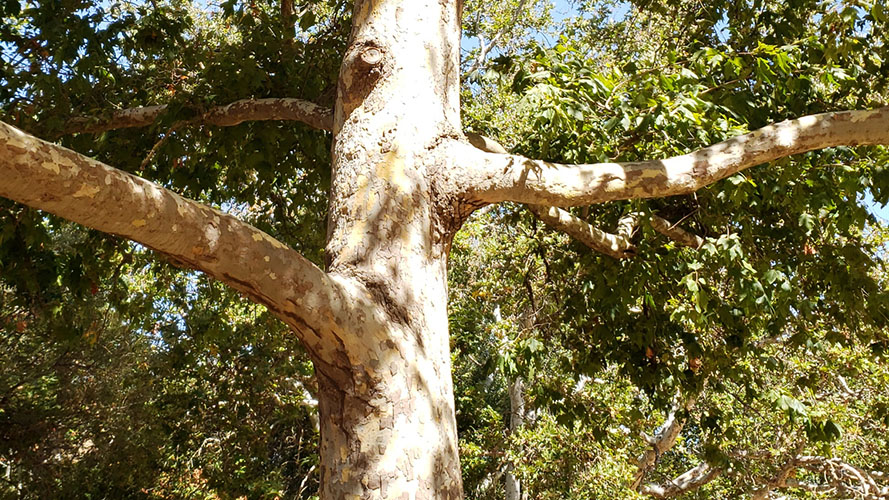Genus: Plantanus
Habit and Habitat: tall, deciduous, usually riparian or wetland habitats. Common names of some species include planes, sycamores.
Flowers and Fruits: hanging stalks with 2.5 to 4 cm diameter balls. Balls are inflorescences of tiny flowers, and later achene fruits. Individual fruits re cone shaped with a single seed.
Leaves: simple and alternate, usually palmately lobed.
Bark: Peels in patches, looks mottled and scaly. In older trees it may crack but not peel off.
ID notes: Based on Geography, most wild Platanus species in California are probably Platanus racemosa.
Higher Classification notes: Sole living genus in the family Plantanaceae.
Species: P. racemosa
Habit and Habitat: Tree can get very large, trunk often divides
Bark: bark is cool patchwork of pink, white, beige, gray, and brown. Older bark is darker and peels.
Leaves: Large palmately lobed leaves (up to 25 cm, 9.8 in) with 3-5 pointed lobes. New leaves may be wooly, translucent, and bright green.
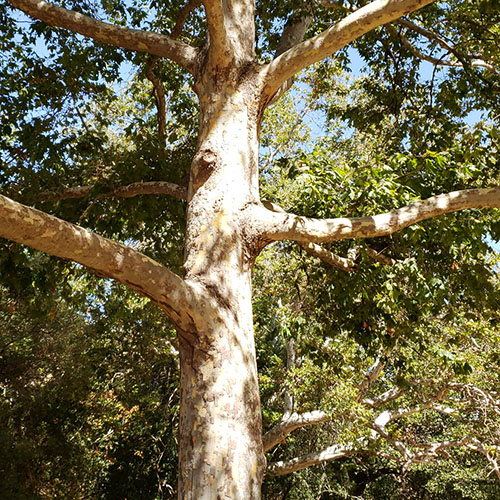
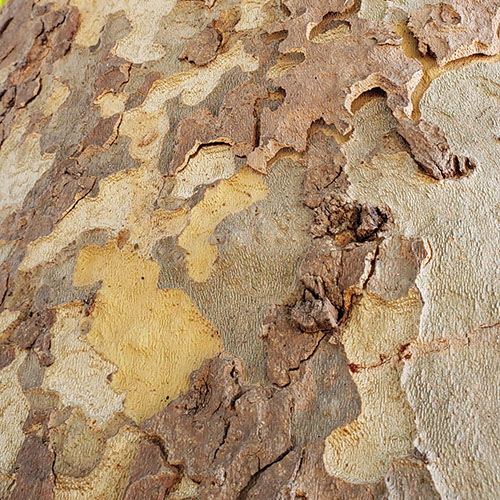
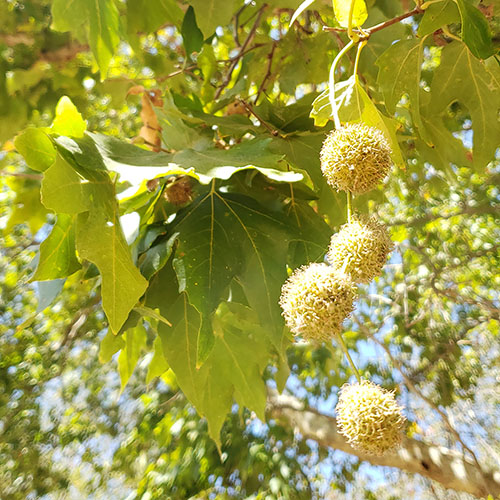
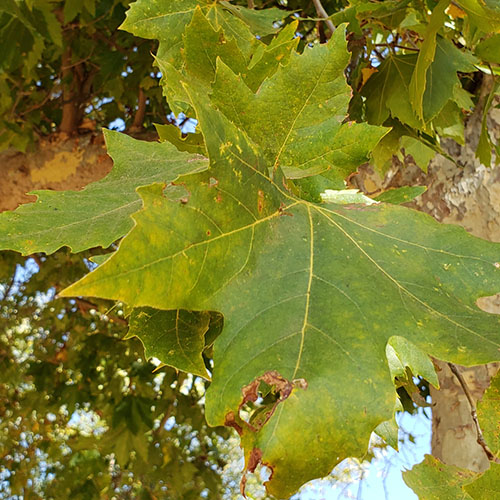
Key features:
- Bark: patchy bark with shades of brown, grey and pink.
- Leaves: large (nearly 10 inches), palmate with 3-5 pointed lobes.
- Flowers and Fruit: hanging balls.
- Location: California (This is the only common wild growing Plantanus species in California).
- Habit and Habitat: large tree, may have divided trunk, riparian or wetland habitat.
Links:
- Here’s my observation in iNaturalist.
- And here’s my YouTube short. (tba)
Sources:
My sources are a combination of: Flora of North America, Jepson eflora, Calflora, iNaturalist and Wikipedia.
Why so limited?
There are a lot (a really really lot) more that you could say about these plants. I could describe their flowers, fruit, reproductive cycles, even chromosome count among a million more details. I intentionally try to distill the information available on the plants I identify to things that are persistent, observable, easy to understand, local, and relevant. (For more info, see this post.)
Help Us Learn:
First, as it says all over my brand, I’m a totally self-taught beginner naturalist… so please, consult other sources for definitive identification.
Second, if I got anything wrong, please help me and the rest of the interweb out by commenting and let me know! I am completely self-taught and a hobbyist, but I do try to be diligent in my research (so please be gentle). I would love any feedback on corrections, key features I missed, interesting tidbits, and uses for the plant (both how it’s useful to nature and it’s environment – or not – and how it’s uses by people).


